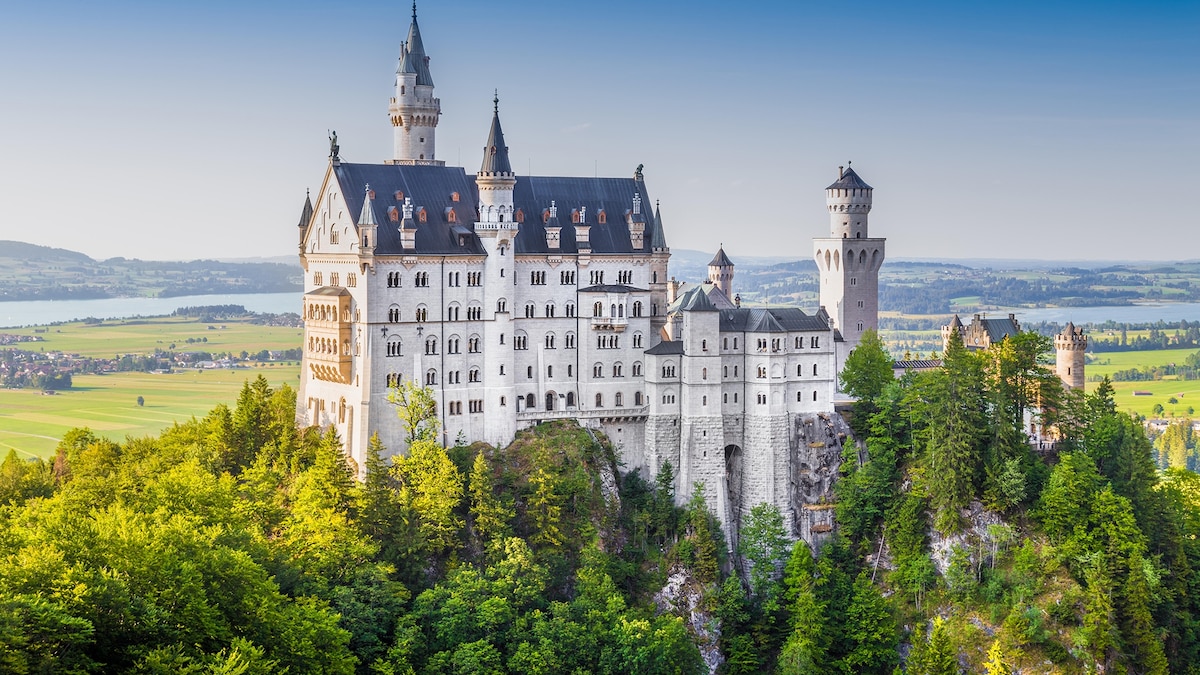This article was produced by National Geographic Traveller (UK).
While not as high or visually dramatic as some other sections of the European range, the Bavarian Alps come with plenty of charm. Cowbells resound across high pastures, wooden huts serve cold beer and turquoise lakes shimmer in the countryside below. There’s also, of course, a famous castle. Schloss Neuschwanstein welcomes huge numbers of visitors every year and fronts many a guidebook — and it has notably just undergone the largest restoration project in its 150-year history. Travelling from west to east, this road trip starts at the landmark before making stops at other impressive structures, notable buildings and feats of engineering across the region.
Kick things off at one of Germany’s most recognisable locations, the enchanting castle said to have inspired those featured in Disney’s Cinderella and Sleeping Beauty. The most extensive makeover to date, including meticulous work on paintings, furniture and a one-tonne chandelier, began in 2017 and is due to be completed this summer. Book onto a guided tour to see the results for yourself, then stroll to nearby Marienbrücke bridge for a view back at the turreted marvel.
For a scenic mountain route, drive via Plansee in Austria to reach Oberammergau. The village is adorned with murals known as Lüftlmalerei, including depictions of Hansel and Gretel and Little Red Riding Hood. But there’s another, different story this place wants to tell. Locals have been putting on a once-a-decade Passion Play, telling the story of the Crucifixion, for almost four centuries — a pledge once made to fend off the plague. The next performance is scheduled for 2030, but you can join a daily tour of the specially built theatre.
Drive south to the island-dotted lake of Eibsee and the Zugspitze cable car. Its construction, which began in 2015 and took two years, was a veritable engineering feat: carrying up to 120 people each, its glass cabins glide smoothly to the 2,962m summit of Germany’s highest mountain in a matter of minutes. Buy a return ticket, allowing plenty of time to take in the panorama: on a clear day, you can see peaks as far as Austria, Italy and Switzerland.
Next, head east and get ready for a hike to the Tegernseer Hütte, a mountain hut perched between the peaks of Roßstein and Buchstein. First constructed in 1903, it was rebuilt in 1965 after a lightning strike. The quickest path takes two hours or less from the car park just west of Bayerwald, zig-zagging through forests, meadows and rougher terrain at the end. Alternatively, there’s a gentler three-hour option. Set off early to reach the terrace for lunch or book well in advance for an overnight and time without the crowds.
Continue along the shores of the Tegernsee and through Bayrischzell until you reach the village of Brannenburg. From here, hop onto one of the yellow carriages that shuttle visitors up and down the Wendelstein mountain. Built between 1910 and 1912, this high-Alpine rack railway was the first of its kind in Germany. Since modernised, it takes you over bridges, through tunnels, under galleries and around rock faces in around 25 minutes.
Follow the road via Reit im Winkl to the Berchtesgadener Land, where the Kehlsteinhaus (nicknamed the Eagle’s Nest) was built atop a rocky outcrop as a retreat for Nazi leadership in the 1930s. Leave your car in Obersalzberg and take a designated bus up Germany’s highest road; a brass-lined lift inside the hillside will then take you to the site, now maintained as a restaurant. There are guided tours of the area to learn about its turbulent past, then end the trip exploring the wider Berchtesgaden National Park.
To subscribe to National Geographic Traveller (UK) magazine click here. (Available in select countries only).
